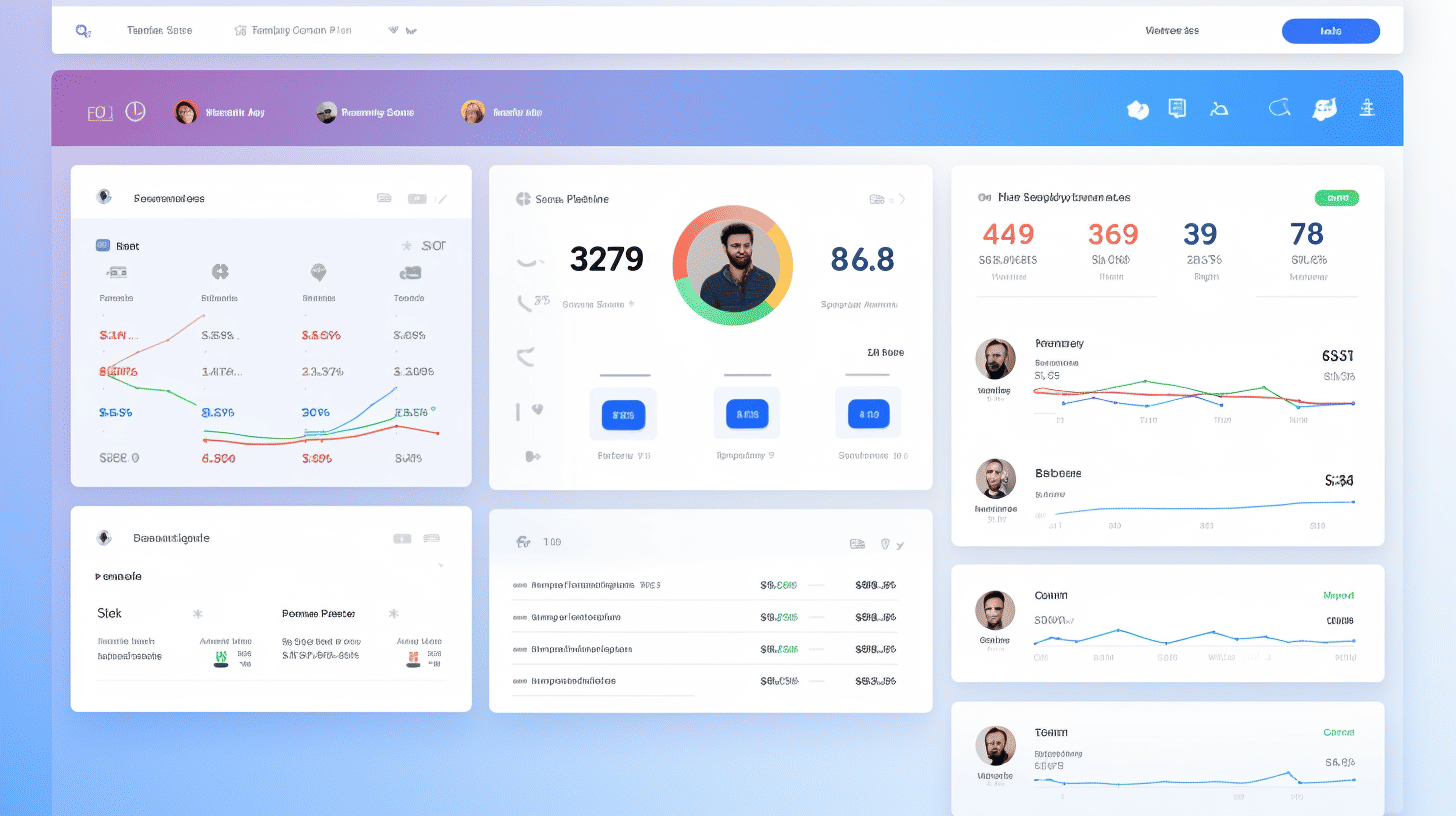管理用户角色和功能是运行 WordPress 网站的一个重要方面。通过为用户分配特定角色,您可以控制他们在网站内的访问、权限和职责。这有助于简化工作流程、增强安全性并优化整体用户体验。无论您是博主、企业主还是网站管理员,了解和实施 WordPress 用户角色管理的最佳实践都是维护正常运行且安全的网站的关键。
在本文中,我们将探讨默认的 WordPress 用户角色及其功能。我们还将讨论用户角色管理的重要性以及它如何使您的网站受益。此外,我们将深入探讨一些有效管理用户角色和确保 WordPress 网站安全的最佳实践。最后,我们将介绍您可以实施的安全登录功能,以进一步保护您的网站免受未经授权的访问。所以,让我们深入探索 WordPress 用户角色和功能管理的世界吧!👩💻🚀
默认 WordPress 用户角色
在管理 WordPress 网站时,了解不同的用户角色至关重要。通过为用户分配特定角色,您可以控制他们可以在您的网站上执行哪些操作。WordPress 有五个默认用户角色:管理员、编辑、作者、贡献者和订阅者。每个角色都有自己的一组权限和能力。让我们深入研究每个角色,看看它们包含什么。
行政人员
这 行政人员 角色是 WordPress 中最高级别的访问权限。管理员可以完全控制网站,包括安装和删除插件、主题,甚至修改 WordPress 的核心文件。他们可以创建、编辑和删除网站上的任何内容,以及管理其他用户的帐户。管理员本质上是 WordPress 网站的“主人”。
编辑
这 编辑 对于那些需要管理和发布内容但无法访问网站其他方面(例如安装插件或修改网站主题)的人来说,编辑者的角色非常合适。编辑者有权发布、编辑和删除网站上的任何内容,包括帖子、页面、类别和标签。他们还可以审核和编辑用户留下的评论。
作者
这 作者 角色专为主要负责创建和管理自己内容的个人而设计。作者可以发布、编辑和删除自己的帖子,但不能操纵或删除其他用户创建的内容。他们无权更改网站的设置或安装插件。
撰稿人
贡献者对 WordPress 网站的访问权限有限,但他们仍然可以贡献有价值的内容。此角色允许用户撰写帖子但不能发布帖子。相反,他们的帖子将提交审核,并且必须由编辑或管理员批准才能发布。贡献者可以编辑自己的帖子,直到获得批准,但他们不能删除帖子或创建新的类别或标签。
订户
最后,我们有 订户 角色,这是 WordPress 网站中最受限制的角色。订阅者可以创建和管理自己的用户个人资料,但除此之外,他们的功能很基础。他们可以在帖子上发表评论并更新自己的个人资料信息,但无权访问任何内容创建或管理功能。
现在您对默认的 WordPress 用户角色有了更好的了解,您可以根据团队成员或贡献者的职责和所需的访问级别为他们分配角色。请记住,您始终可以创建自定义角色或修改现有角色以满足您的特定需求。
有关管理 WordPress 中的用户角色和管理栏的更多信息,请查看此综合指南: WordPress 中的管理栏.
用户角色管理的重要性
用户角色管理是网站管理和安全的一个重要方面。它允许网站所有者根据特定的用户角色控制和限制对其网站不同部分的访问。通过定义用户角色并分配适当的权限,网站所有者可以确保用户只能访问他们需要的内容和功能。
让我们来探讨一下用户角色管理对网站管理员至关重要的一些主要原因:
受限内容
用户角色管理使网站所有者能够限制对特定内容的访问,确保只有授权用户才能查看或与其交互。这对于提供高级或付费内容的网站尤其有用,例如在线课程、会员专区或独家下载。通过定义用户角色并相应地授予访问权限,网站所有者可以确保只有付费客户或注册会员才能访问有价值的内容。
会员网站
对于采用会员制或订阅制模式的网站,用户角色在管理用户访问和权限方面起着至关重要的作用。通过为会员或订阅者分配不同的角色,网站所有者可以创建访问权限层级,根据会员级别提供不同级别的内容或福利。用户角色管理可以轻松管理大量会员,同时确保每个会员都具有适当的访问权限级别。
工作流程优化
用户角色管理可以通过为不同用户分配特定角色和职责来大大简化网站的工作流程。通过委派任务和授予特定权限,网站管理员可以分配工作量并确保每个团队成员都可以访问必要的工具和资源。这不仅可以增强协作,还可以提高整体生产力和效率。
网站安全
实施用户角色管理的最重要原因之一是增强网站安全性。通过分配角色和权限,网站所有者可以最大限度地降低网站内未经授权访问或恶意活动的风险。用户角色管理还通过限制仅受信任用户的访问来帮助保护敏感信息。通过密切管理用户角色并定期审查和更新权限,网站管理员可以降低其网站受到潜在安全威胁的脆弱性。
为了确保你的 WordPress 网站的安全,可以考虑使用以下插件 保护 WordPress 网站 提供全面的安全功能和用户角色管理功能。这些插件可以帮助您实施强密码策略、启用双因素身份验证并保护您的网站免受未经授权的访问。
总而言之,用户角色管理是网站管理的基础。通过定义用户角色并分配适当的权限,网站所有者可以控制访问、改进工作流程并增强网站的整体安全性。实施用户角色管理策略并使用专用的安全插件可以帮助网站管理员保护有价值的内容、简化操作并保护他们的网站和用户。
用户角色管理的最佳实践
用户角色管理是维护安全有序的 WordPress 网站的关键方面。通过为每个用户角色分配适当的权限,您可以控制对敏感区域的访问,并确保只有授权人员才能执行某些操作。在本文中,我们将探讨一些用户角色管理的最佳实践,这些实践可以帮助您简化网站的功能并增强其安全性。
🌟分配所需权限
分配用户角色时,务必仔细考虑每个角色所需的权限。这将确保用户能够访问必要的特性和功能,而不会授予他们不必要的权限。以下是一些帮助您为每个用户角色分配适当权限的提示:
- 行政人员 – 此角色仅应授予需要完全控制网站的可信赖人员。管理员可以添加和删除用户、安装插件和主题、修改核心设置以及执行其他关键任务。
- 编辑 – 编辑有权发布和管理帖子,包括编辑和删除其他用户创建的内容。他们还可以审核评论、创建类别和标签以及管理媒体文件。编辑应该经验丰富,并且对您网站的内容管理流程有充分的了解。
- 作者 – 作者可以创建、编辑和删除自己的帖子。他们还可以上传媒体文件来补充内容。此角色适合定期向您的网站贡献内容并需要对自己的作品有更多控制权的个人。
- 撰稿人 – 贡献者的权限有限,可以创建和编辑自己的帖子,但不能发布。相反,他们的内容需要由编辑或管理员审核和发布。此角色适合客座贡献者或偶尔提供内容的个人。
- 订户 – 订阅者拥有最有限的权限,只能管理自己的个人资料和评论。此角色适合那些想要随时了解您网站内容或通过评论与社区互动的个人。
🌟利用 WordPress 插件或代码
手动管理用户角色可能是一项耗时的任务,尤其是在您拥有大量用户或权限要求复杂的情况下。为了简化流程,您可以依靠提供高级用户角色管理功能的 WordPress 插件或自定义代码。
使用插件或自定义代码可以让你:
- 创建自定义用户角色 – 一些插件提供了创建自定义用户角色的功能,允许您微调权限并根据您的特定需求进行定制。
- 管理用户能力 – 插件通常提供易于管理用户功能的界面,使您能够为每个角色分配或撤销特定权限。
- 批量编辑用户角色 – 插件可以简化编辑用户角色的任务,允许您批量更改,而不是单独调整每个用户的角色。
提供高级用户角色管理功能的一个流行插件是 推荐的 WP 插件。该插件提供了一系列功能来帮助您有效地管理用户角色,使其成为 WordPress 网站所有者的宝贵工具。
🌟定期审查和更新用户角色
随着网站的发展,用户角色及其相关权限可能需要随时间更新。定期检查和调整用户角色以确保其符合当前要求非常重要。以下是您可能需要更新用户角色的一些原因:
- 组织变革 – 如果您的团队结构或职责发生变化,您可能需要创建新的用户角色或修改现有的用户角色以反映这些变化。
- 插件或主题更新 – 插件或主题的更新可能会引入需要特定用户角色或权限的新功能。定期检查您的用户角色可确保您能够利用这些更新而不会影响安全性。
- 用户请求 – 用户可能会请求额外的权限或访问特定功能。通过审查和考虑这些请求,您可以维护一个用户友好的环境,同时仍能保持网站的整体安全性。
🌟增强网站安全性
用户角色管理在增强 WordPress 网站的安全性方面起着至关重要的作用。通过遵循这些最佳实践,您可以最大限度地降低未经授权访问和潜在安全漏洞的风险:
- 定期审核用户角色 – 对用户角色进行例行审核,确保用户拥有适当的权限。删除任何不必要的角色,以最大限度地降低未经授权的个人意外滥用或利用的风险。
- 限制管理员访问 – 限制网站上的管理员数量,以降低安全漏洞的可能性。仅向需要特定角色或职责的个人提供管理员访问权限。
- 实施双因素身份验证 – 为用户帐户启用双因素身份验证,在传统登录凭据之外增加额外的安全保障。
通过实施这些用户角色管理的最佳实践,您可以维护一个安全且有序的 WordPress 网站,确保每个用户都拥有适当的访问权限和权限来执行其指定的任务。
安全登录功能
在当今的数字时代,网络安全变得比以往任何时候都更加重要。随着网络威胁的日益普遍,确保您的在线帐户受到保护非常重要。抵御未经授权访问的第一道防线之一是强大的登录功能。在本节中,我们将探讨两个必不可少的安全登录功能:强密码和双因素身份验证。
强密码
强密码是安全登录的基础。它是您的敏感信息与潜在攻击者之间的一道屏障。让我们仔细看看什么才是强密码:
- 复杂: 强密码应由大小写字母、数字和特殊字符组合而成。避免使用姓名、生日或常用词等容易猜到的信息。
- 长度: 密码越长,破解难度就越大。密码长度至少为 8 个字符,但理想情况下,密码长度至少为 12-16 个字符。
- 避免重复使用密码: 对多个帐户使用相同的密码会使您的所有帐户面临风险。为您使用的每个在线服务或平台创建唯一的密码。
- 密码管理器: 考虑使用密码管理器来安全地存储和生成每个帐户的唯一强密码。这样,你只需要记住一个主密码。
通过遵循这些密码创建最佳实践,您可以显著降低未经授权访问您的在线帐户的风险。请记住,密码越强,您的帐户就越安全。
双重身份验证
虽然强密码至关重要,但密码仍有可能被破解。这就是双因素身份验证 (2FA) 发挥作用的地方。2FA 增加了一层额外的安全保护,除了密码之外,还需要第二种验证方式。它的工作原理如下:
- 你知道的事情: 这是您的密码,您可以像平常一样输入。
- 你有的东西: 这通常是发送到您的移动设备或电子邮件的唯一验证码或令牌。您需要输入此代码才能完成登录过程。
通过实施 2FA,即使有人设法窃取您的密码,他们也无法在没有第二重身份验证的情况下访问您的帐户。它提供了额外的保护级别,以防止未经授权的访问。
要设置双重身份验证,您可以使用多种方法,例如短信代码、身份验证器应用程序或硬件令牌。许多在线服务和平台现在都提供此功能,强烈建议尽可能启用它。
你可知道? 您可以在网站上使用 SSL 证书,进一步增强登录的安全性。SSL 证书会加密您的网站与用户浏览器之间的通信,确保登录过程中传输的敏感信息是安全的。了解如何在您的 WordPress 网站上安装免费的 SSL 证书 在这里,.
请记住,在保护您的在线帐户时,强密码和双因素身份验证是密不可分的。通过实施这些安全登录功能,您正在采取主动措施来保护您宝贵的个人信息并维护您的在线隐私。保持安全!😊🔒
结论
总之,适当的用户角色和能力管理对于 WordPress 网站至关重要,以确保受限内容得到保护、团队工作流程得到优化并维护网站安全。通过为每个用户角色分配适当的权限,并随着网站的发展定期审查和更新用户角色,企业可以增强其在线形象并保护敏感信息。请记住实施安全登录功能,例如强密码和双因素身份验证,以进一步保护您的网站。
在 Managed-WP,我们了解用户角色管理和网站安全的重要性。我们的高级托管 WordPress 云托管平台提供一系列功能和专家支持,以简化您的基础设施,提供自由的数字体验,并确保及时解决任何问题。使用 Managed-WP 提升您网站的性能和安全性。详细了解我们的服务,请访问 managed-wp.com.
常见问题
- WordPress 中的用户角色和功能是什么?
WordPress 中的用户角色定义了分配给不同用户的权限和能力级别。能力是允许或限制用户在 WordPress 网站上执行的特定操作。
- WordPress 中的默认用户角色是什么?
WordPress 中的默认用户角色是管理员、编辑、作者、贡献者和订阅者。每个角色都有不同的权限和能力。
- 如何管理 WordPress 中的用户角色?
WordPress 提供内置用户管理系统,您可以轻松添加、编辑或删除用户角色。您可以使用插件或自定义代码修改每个角色的功能以满足您的特定要求。
- 为什么在 WordPress 中管理用户角色和功能很重要?
管理用户角色和功能有助于确保对 WordPress 网站的适当安全性和控制。通过为用户分配适当的角色,您可以限制对敏感信息和功能的访问,降低数据泄露风险,并维护网站的整体完整性。
- 是否有任何插件可用于协助 WordPress 中的用户角色和功能管理?
是的,有几种插件可以帮助您管理 WordPress 中的用户角色和功能。一些常用的选项包括用户角色编辑器、成员和高级访问管理器。



















